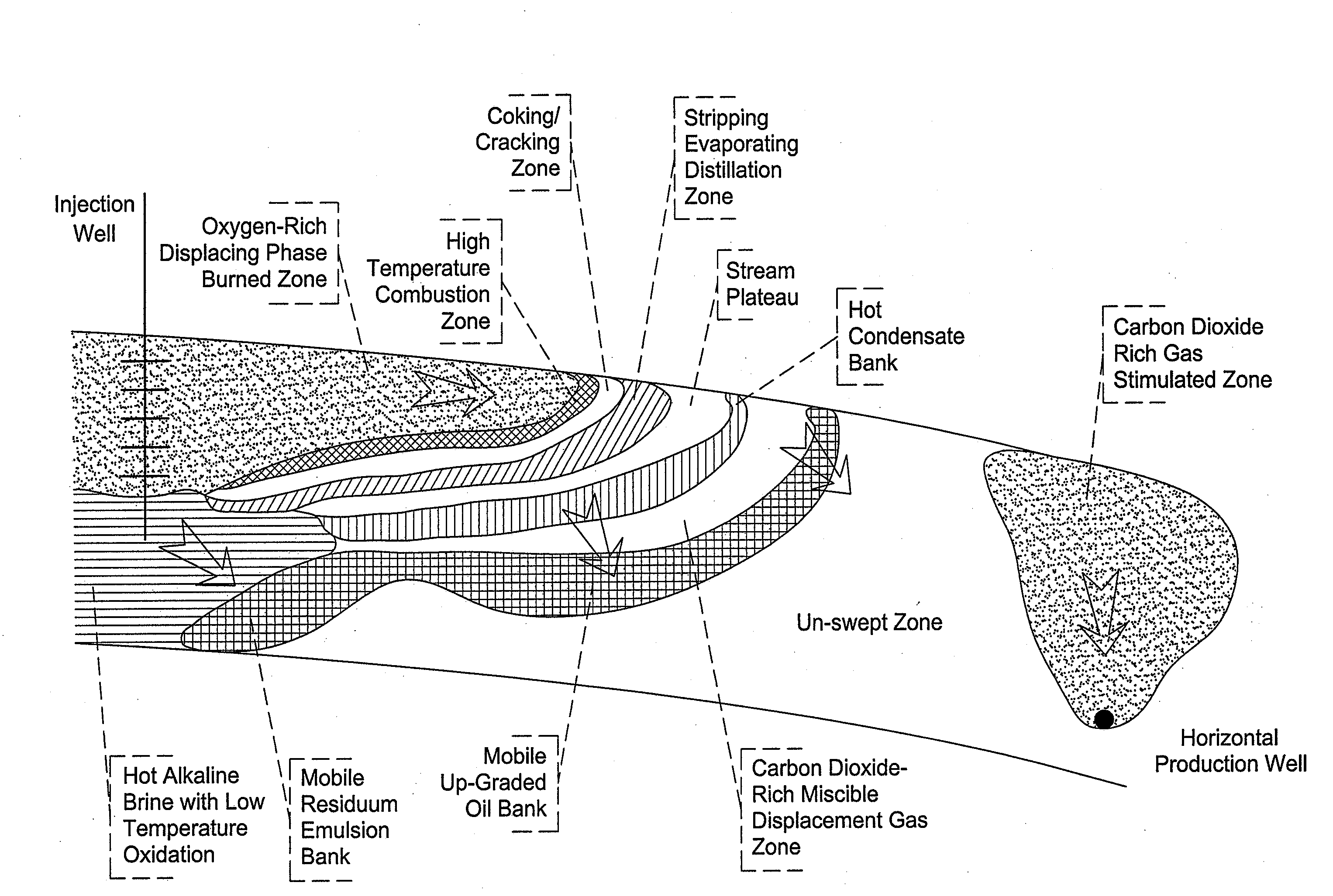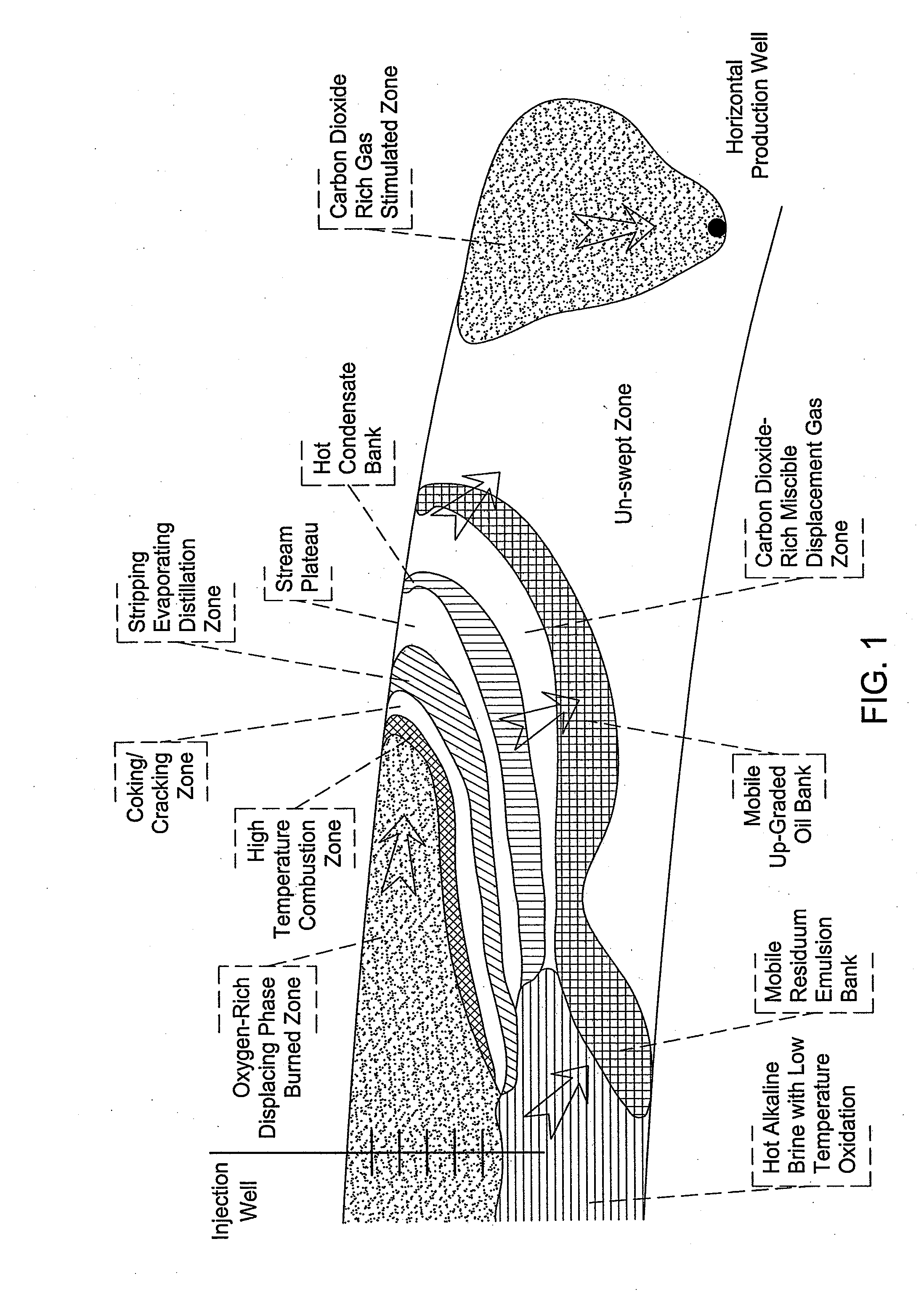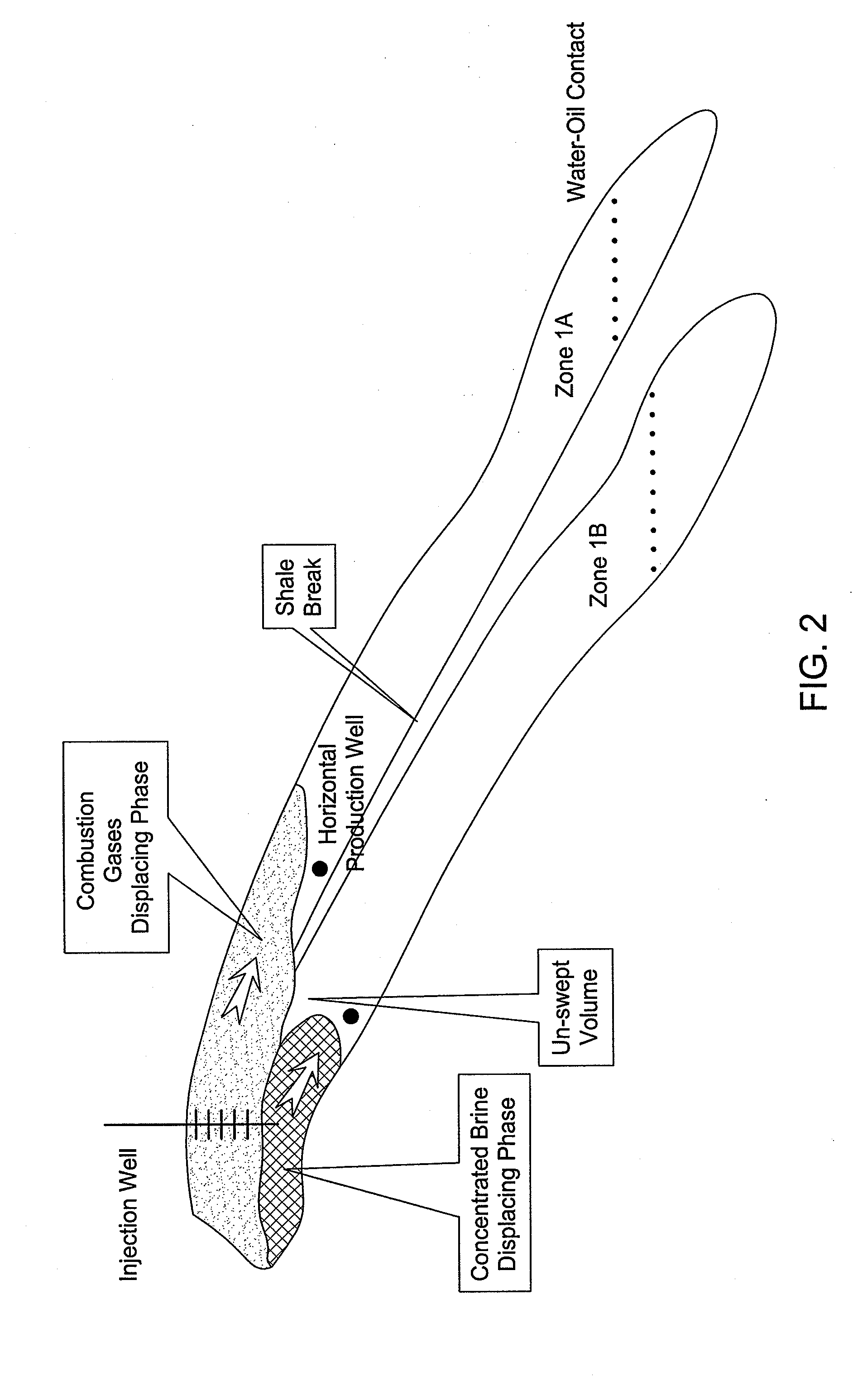Combined miscible drive for heavy oil production
a technology of heavy oil and combined drive, which is applied in the direction of fluid removal, chemistry apparatus and processes, and wellbore/well accessories, etc., can solve the problems of hydro cracking of asphaltene fraction, steam injection process heat loss to the upper and lower layers surrounding the target formation, and the economic undesirable effect of steam-flooding heavy oil formations
- Summary
- Abstract
- Description
- Claims
- Application Information
AI Technical Summary
Benefits of technology
Problems solved by technology
Method used
Image
Examples
Embodiment Construction
[0038]The invention will now be described with reference to the drawing figures, in which like reference numerals refer to like parts throughout. Combined miscible displacement is an in-situ wet combustion technique in which an aqueous surfactant solution is pumped simultaneously with near-pure oxygen gas into the formation as foam. According to this technique, a high-temperature foaming agent is typically used to prevent the gravity segregation of water from the oxygen gas and to provide mobility control with heavy oil formations.
[0039]Wet foam forward combustion was developed to recover the great amount of heat that would otherwise be lost to heat transfer to the surrounding layers bounding the target formation. The foam promotes uniform burning along the combustion front in a formation with variable permeability in the horizontal and vertical directions. As the water evaporates from the foam, the quality of the foam increases until it reaches about 90%. Then, the foam breaks and ...
PUM
 Login to View More
Login to View More Abstract
Description
Claims
Application Information
 Login to View More
Login to View More - R&D
- Intellectual Property
- Life Sciences
- Materials
- Tech Scout
- Unparalleled Data Quality
- Higher Quality Content
- 60% Fewer Hallucinations
Browse by: Latest US Patents, China's latest patents, Technical Efficacy Thesaurus, Application Domain, Technology Topic, Popular Technical Reports.
© 2025 PatSnap. All rights reserved.Legal|Privacy policy|Modern Slavery Act Transparency Statement|Sitemap|About US| Contact US: help@patsnap.com



